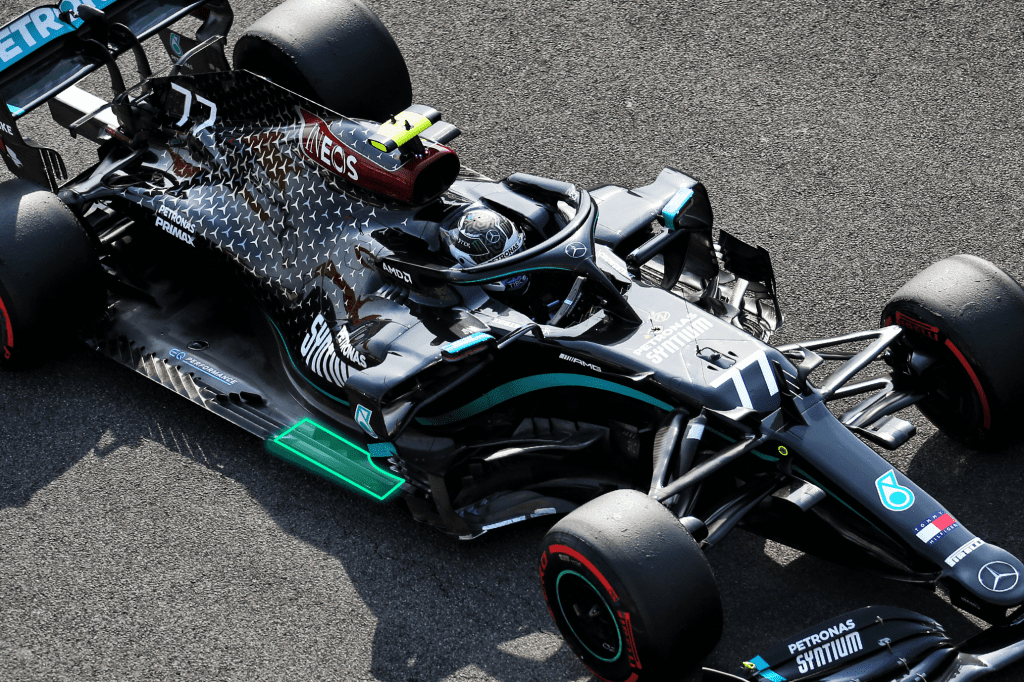Up Next

Mercedes’ “most intense and difficult” challenge with its 2021 Formula 1 car has been reacting to four key aerodynamic rule changes reducing performance to near-2019 levels, says James Allison.
Development of mechanical car components has been heavily restricted to facilitate considerable carry-over from last year to this year, plugging a gap created by new technical rules being delayed to 2022.
However, aerodynamic development is free during the winter, and in addition to the usual focus on upgrades teams have also had to contend with rule changes designed to reduce the performance of the cars.
That is because the coronavirus pandemic stopped Pirelli completing a full testing programme last year and being able to introduce completely new tyres for 2021.
Pirelli had already carried over its 2019 specification to 2020 and while a small reinforcement has been made for 2021, there were fears that the cars would become too fast for the tyres if development was left unchecked.
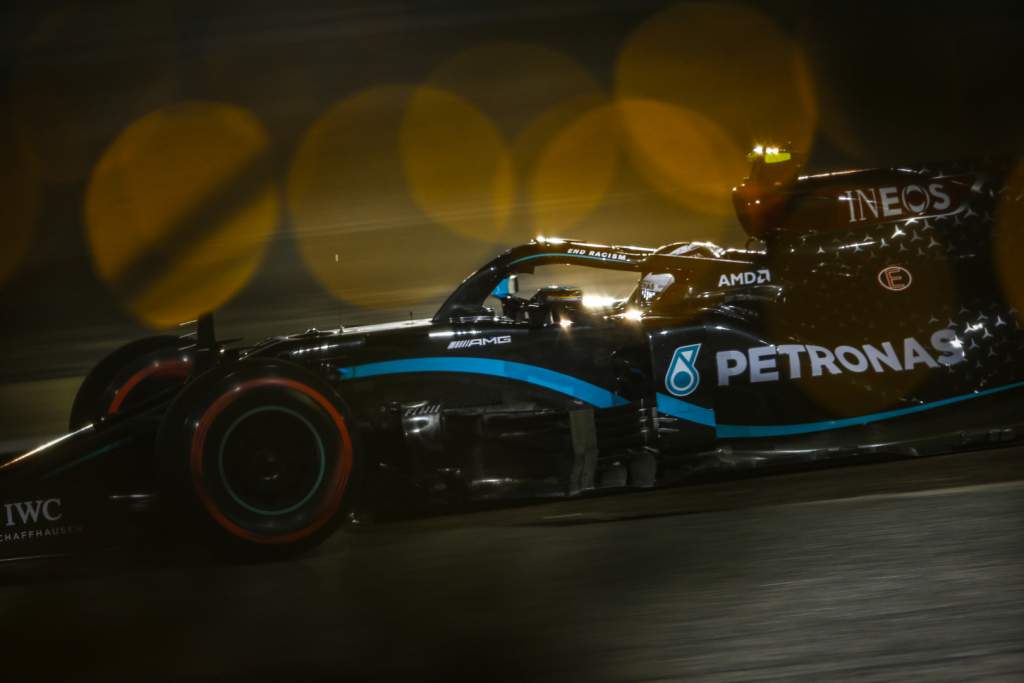
Mercedes technical director Allison says these aero rule changes have played a key role in the off-season remaining “every bit as difficult as it normally is” despite the reduced production workload that has come with carrying over major mechanical parts.
Allison has highlighted four changes: the removal of part of the rear of the floor, the removal of myriad slots at the front of the floor, the reduction in size of appendages on the rear brake ducts, and shortened fences beneath the diffuser.
The combined impact “in their rawest form… brings the performance of the car way back to sort of somewhere near 2019 levels”, says Allison.
“Probably the most intense and difficult thing for us is reacting to the aerodynamic changes that come for 2021,” he explained in a Mercedes in-house video.
“Four quite significant aerodynamic changes were made last year in anticipation of this new season.
“First and foremost, there has been a triangular cut-out to the edges of the floor in front of the rear wheels [illustrated below by Haas’s 2021 floor test in Abu Dhabi last year] which when you see it, you’ll think, ‘that doesn’t look that big’.
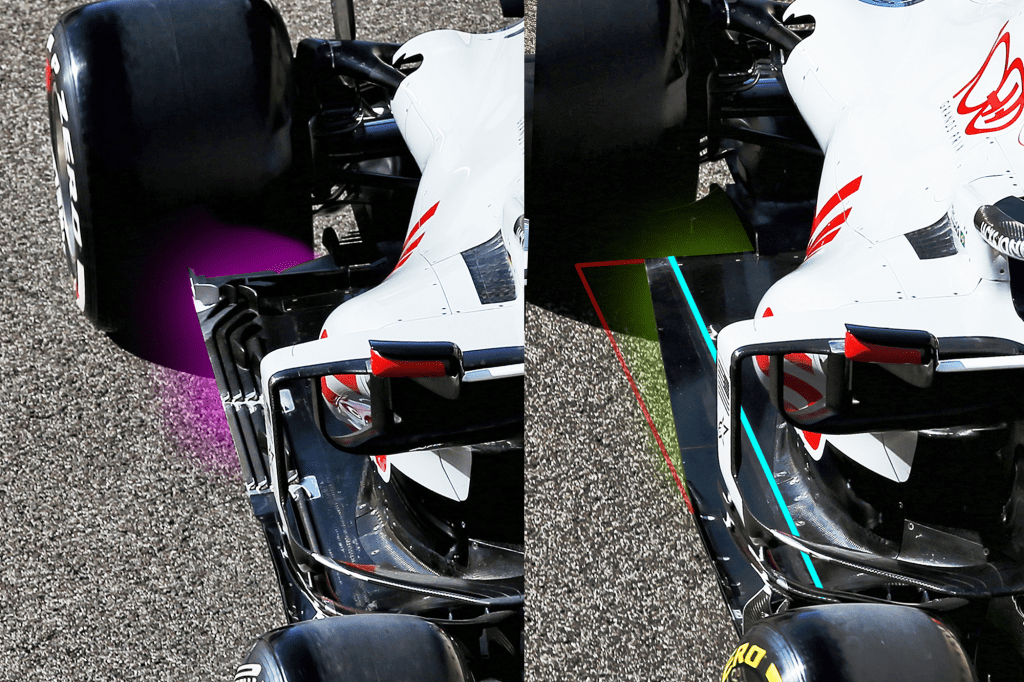
“But on its own, in its rawest form, if you just chop that area off your car it’ll take about a second a lap away from the car.
“The little fins and flicks that were on the rear brake duct were reduced in their span just by a few millimetres but again, they were very powerful devices and that change lost a lot of performance from the car.
“At the back of the car, underneath in the diffuser area, the fences that you can see if you peer up the back end of the car were reduced in height so that they can’t go as near to the ground.
“They can’t create as good of an aerodynamic seal to the ground as they did previously. And they shed a bunch of downforce when they are trimmed upwards.
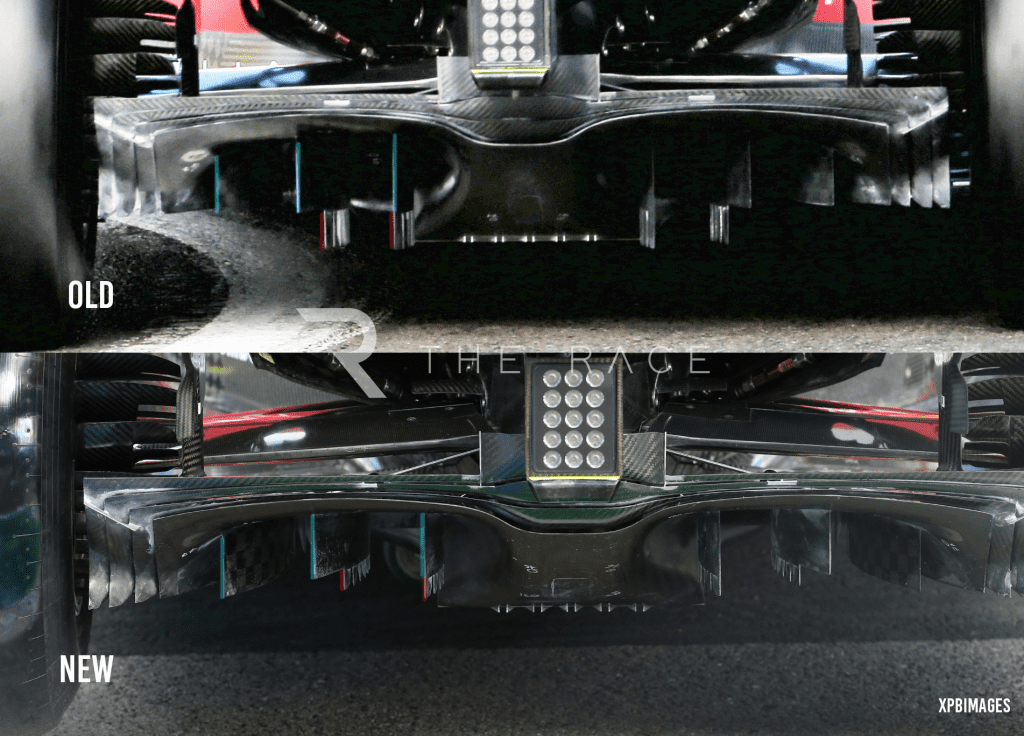
“Finally, the front end of the floor, as you approach where the bargeboards are, if you looked at the 2020 versions of those floors you see that they look a bit like a venetian blind, with lots and lots of slots, an aerodynamic feature there that generates downforce.
“All of those slots have been removed for 2021.
“It’s been our challenge over the weeks and months since those rules were set in stone to try to recover as much of the performance as possible.
“That has been quite an entertaining ride in the windtunnel and in CFD to try and make sure that we get that performance as far as possible back onto the car.”
The changes Pirelli was able to implement on its tyres for 2021 were met with criticism from drivers when they first sampled them in Portugal last year.
It was felt that the added robustness of the tyre had come at the cost of a lot of performance.
However, Pirelli offered more guidance ahead of subsequent tests in Bahrain and Abu Dhabi, and these runs drew a more neutral response.

Those tests were limited to short runs conducted during free practice ahead of the three named grands prix, which Allison says means teams are lacking comprehensive data of a substantial change.
“That’s not really very much opportunity to take onboard a new tyre and get ready for a new season with it,” he says.
“These tyres will affect the way that the car performs and they affect the way that you have to design the aerodynamic platform and the way that you have to set up the car.
“It’s been a big challenge for us to try and stretch out that testing data that we had at the tracks last year and to try and make as much as we can out of the tyre data supplied to us by Pirelli so that we would be ready to really optimise the car around the characteristics of these new tyres.”
Another fundamental car change within the 2021 rules is yet another minimum weight increase, up by three kilos – with Pirelli’s more durable tyres several kilos heavier than before.
Mercedes’ 2020 design was by itself under the weight limit though, so it has been able to use the required increased weight – in order to comply to the regulations – to effectively deploy it as ballast to maximise the performance.
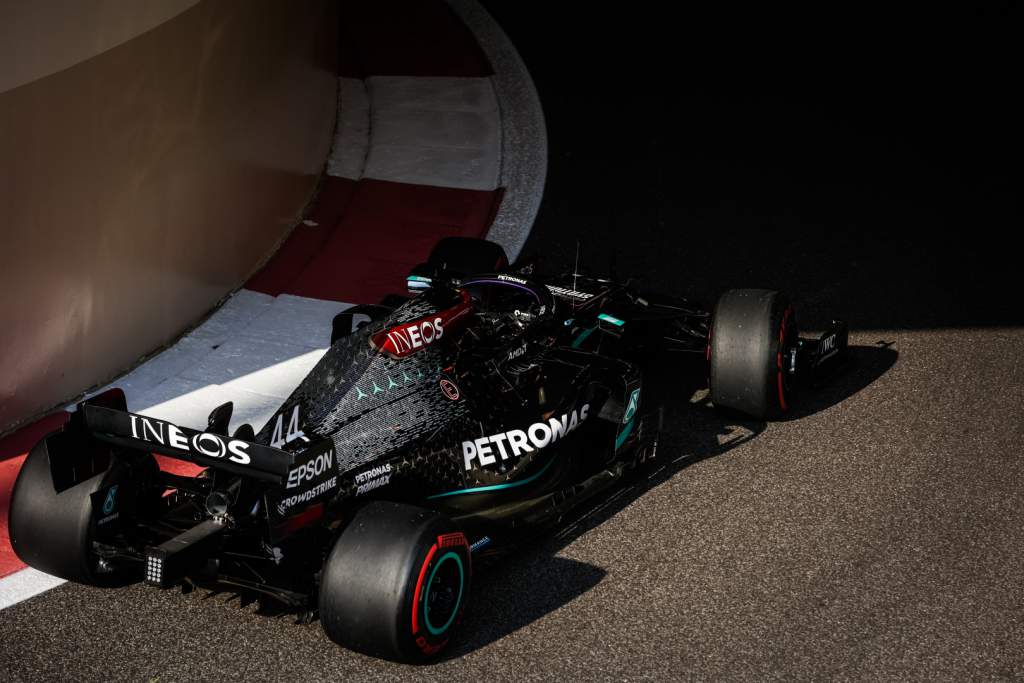
There are other factors such as the banning of the Mercedes dual-axis steering system for 2021, and the restriction of engine upgrades to just between the end of 2020 and the end of 2021, which has prompted Mercedes’ High Performance Powertrains division to “pack as much goodness” into its sole permitted new specification as possible.
Allison believes that the extent of small changes in 2021 means people should not be “fooled” by suggestions that the carry-over of mechanical parts means the season will be a 2020 repeat.
In addition to new technical changes, teams are adapting to new financial restrictions and a first-ever aerodynamic testing handicap.
“The rules are very, very different for 2021,” he says.
“The work we’ve had to do has been very wide-reaching and we hope we have done enough to stay successful.
“But as ever at this time of year we are just full of the anxiety and excitement of waiting to find out whether all this investment that we have made into the new car will indeed pay off with a challenger that is capable of fighting from the front.”


